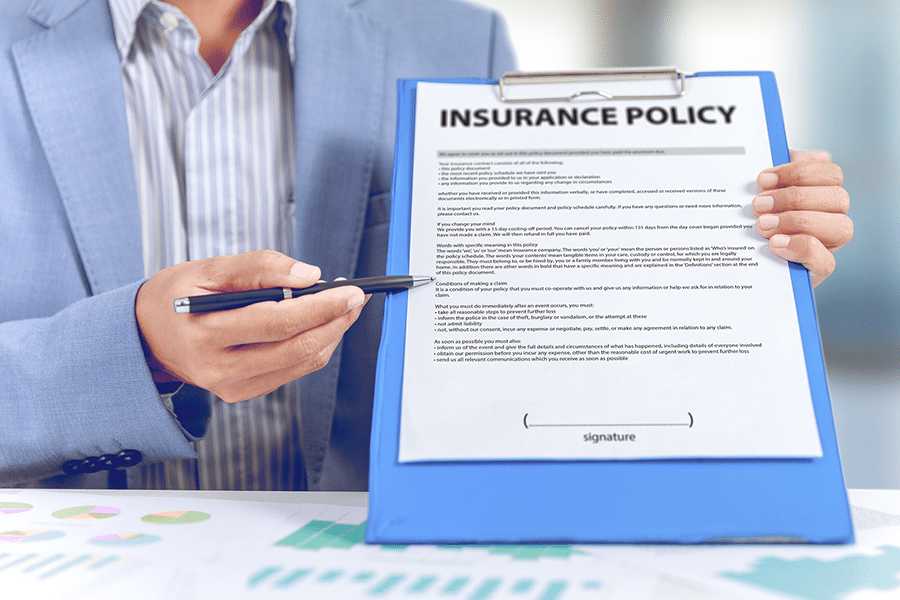Builder’s risk insurance is a specialized commercial property insurance available as a stand-alone policy or as an endorsement. It covers damage to a building project or a renovation during construction and ends when the project is completed. Policies usually cover named perils like fire, theft, and weather events. Builder’s risk insurance costs will usually run from 1% to 5% of the total construction project, so for a $250,000 project, it could cost anywhere from $2,500 to $12,500.
How Builder’s Risk Insurance Works
As a type of commercial property insurance, builder’s risk insurance covers the first-party property involved in a construction project: materials, fixtures, equipment, and the structure itself. While commercial property limits coverage to specific locations, the builder’s risk will cover equipment in transit and in other locations.
Builder’s risk insurance policies have two types: named-peril and all-risk.
- A named-peril policy covers specified losses like fire, theft, vandalism, and types of extreme weather like hail.
- An all-risk policy covers all forms of risk, less the ones specifically excluded in the policy. The policy is purchased for the specified project term, such as three, six, or 12 months. All-risk is the most common type of builder’s risk policy.
For example, you purchased some land and began constructing a new structure. A builder’s risk policy would be taken out for the project and cover the building, materials, and equipment involved. If a trespasser steals some of the material or accidentally causes a fire from a cigarette, then you could file a claim on the builder’s risk policy for the cost of rebuilding or replacing the materials.
Who Needs Builder’s Risk Insurance
The primary purchaser of builder’s risk insurance is the builder. This type of insurance is needed for every new construction and most major renovation projects. Beyond the builder, other parties who have an insurable interest, or a financial stake, in the project may either request to be named on the policy as an additional insured or be considered by the builder. This includes the general contractor, architect, engineer, and lending institution.
Builder’s Risk Insurance Coverage & Exclusions
A builder’s risk policy is designed to cover the typical risks that builders face. Even when a structure is partially built, it still has value. Like all insurance policies, builder’s risk has specified coverage and exclusions.
What Builder’s Risk Covers
Builder’s risk policies can be a named-peril, meaning the specific named perils listed are covered, or all-risk, meaning coverage extends to any exposures associated with the project less the listed exclusions.
Risks commonly covered by builder’s risk insurance include the following:
- Fire
- Theft
- Vandalism
- Wind, hail, and rain
- Collision (by vehicle or aircraft)
Covered property often includes materials, supplies, and fixtures. You can add an insurance endorsement to include machinery and equipment and unattached structures, like office trailers, fences, landscaping, and scaffolding.
What Builder’s Risk Does Not Cover
Common exclusions are acts of war, intentional damage, and normal wear and tear. Most policies also exclude extreme acts of nature, such as earthquakes and floods. However, while exclusions take coverage away, most insurers offer endorsements, which—if purchased—will give that coverage back.
Importantly, builder’s risk is a first-party coverage. This means it does not have liability for other parties. For that, you will still need general liability insurance.
Builder’s Risk Common Endorsements
Endorsements change the policy by adding, removing, or altering the coverage. Depending on your policy and the building project, an endorsement may be necessary to ensure your investment is fully protected.
Common builder’s risk endorsements you can purchase are as follows:
- Materials and property in transit
- Scaffolding at the job site
- Backup of sewer and drain
- Tools used and stored at the site
- Heavy equipment and machinery
Builder’s Risk Insurance Costs
When you are insuring property, the premium will be directly related to the cost of the property you are insuring. Hence, builder’s risk insurance costs vary widely based on the type of project, location, construction costs, and construction type, as well as materials.
A typical rule of thumb is that premiums usually run anywhere from 1% to 5% of the project cost. However, note that insurers can still approach underwriting with their own proprietary approach, so the final costs may be different.
Cost of the Project | Estimated Builder’s Risk Premium |
|---|---|
$100,000 | $1,000 to $5,000 |
$250,000 | $2,500 to $12,500 |
$500,000 | $5,000 to $25,000 |
$1 million | $10,000 to $50,000 |
The key factors that builder’s risk insurance companies consider when determining the premium include the following:
- Project duration: The faster a project is completed, the lower your premium will be because the window for accidents to occur is reduced. Longer projects tend to have more downtime, leaving the location unattended and exposed to more losses.
- Project locations: Geographic locations may increase the chances of perils such as hail, windstorms, or even crime.
- New construction: New construction projects need coverage for excavation, site preparation, infrastructure, temporary structures, and even temporary power stations.
- Renovations and remodeling: Protecting an existing structure during a major renovation increases the costs of builder’s risk. The most notable recent claim on a remodel happened in France when the Notre Dame Cathedral was consumed in a fire.
- Construction materials: Using high-quality materials for cabinetry, windows, or other features usually requires more coverage for the project.
One way to offset the cost is by raising your insurance deductible. A higher deductible usually translates into a lower adjustment to the premium. But remember, the deductible is your responsibility to pay if you end up filing a claim, and this amount will come into play with every claim filed on the policy.
Other Insurance Builders May Need
Builder’s risk insurance doesn’t cover every type of loss. Because it is a type of commercial property, it doesn’t provide liability coverage. Given your business and type of exposure, other policies should be considered.
- Commercial general liability covers third-party bodily injury, property damage, and related legal costs. Since builder’s risk doesn’t carry liability, you’ll need general liability in case a third party gets injured on your job site.
- Commercial auto insurance covers damage to your vehicle, other vehicles, and injured parties involved in an accident.
- Workers’ compensation insurance covers your employees’ medical bills and lost wages for work-related injuries or illnesses.
- Professional liability insurance covers injuries, property damage, and related costs caused by your work, including advice. It also protects against claims arising from an error in building or failure to fulfill a building contract.
- Commercial umbrella insurance increases liability coverage on many business liability policies, including general liability, commercial auto, and workers’ comp.
Frequently Asked Questions (FAQs)
It can be. Mortgage companies covering the project can require builder’s risk, and it may also be required in the agreement between the builder and the general contractor. Builder’s risk insurance is always a good idea for a new build or a major renovation.
General contractors, property owners, and financing parties (lenders) involved with the building project need builder’s risk insurance. Normally, general contractors purchase the policy and include the stakeholders as named insureds. However, it is possible to have other stakeholders, like a homeowner, purchase the policy.
No, property insurance is a traditional type of policy that covers an existing structure, whereas builder’s risk is a specialized type of commercial property insurance that covers risks during construction. Both policies are first-party coverage.
For homeowners expanding the footprint of their home, check with your existing homeowners policy to see what coverage is extended during construction. A rider to give the necessary coverage is often available, as the standard homeowner policy may be limited in coverage.
The premium for builder’s risk insurance is usually anywhere from 1% to 5% of the total cost of the project. The type of property, location, and materials all play a part in the final cost.
Course of construction insurance is another name for builder’s risk insurance. There isn’t any difference between the two outside of a different name.
A CCIP and owner-controlled insurance program (OCIP) are much more comprehensive insurance programs that include workers’ compensation and general liability.
Bottom Line
When purchasing builder’s risk insurance, it is important that the company you choose is easy to work with and capable of insuring high-value properties. The Hartford has a reputation for great customer service, convenient account maintenance, and high commercial property limits. From The Hartford, you can get builder’s risk and pretty much any other small business insurance you might need.


